Home>diy>Planning & Engineering>What Is A Zoning Law


Planning & Engineering
What Is A Zoning Law
Modified: January 9, 2024
Learn about zoning laws and how they impact planning and engineering. Understand the role of zoning in land use regulations and urban development.
(Many of the links in this article redirect to a specific reviewed product. Your purchase of these products through affiliate links helps to generate commission for Storables.com, at no extra cost. Learn more)
Introduction
Welcome to the world of zoning laws. You may have heard this term before, but what exactly does it mean? In simple terms, zoning laws are regulations put in place by local governments to control the use and development of land within their jurisdiction. These laws dictate how different areas can be utilized – whether for residential, commercial, industrial, or other purposes.
Zoning laws are a crucial part of urban planning and are designed to strike a balance between protecting the interests of the community and promoting orderly growth. They ensure that land is used in a way that is compatible with its surrounding environment and that different land uses are appropriately separated to avoid conflicts.
In this article, we will delve into the world of zoning laws, exploring their purpose, key components, enforcement, and variances. We will also discuss the pros and cons of zoning laws as well as some of the challenges and criticisms they face. So, let’s leap into this fascinating topic and gain a better understanding of what zoning laws are all about.
Key Takeaways:
- Zoning laws are essential for organized development, property value protection, and public health. However, they can be inflexible and may perpetuate social and economic disparities, requiring ongoing evaluation and community input for improvement.
- Zoning variances provide flexibility within zoning regulations, allowing for exceptions under specific conditions. However, they must align with community goals and preserve the integrity of zoning laws, ensuring equitable and sustainable development.
Read more: How To Find Out Zoning Laws
Definition of Zoning Law
Zoning law can be defined as a set of regulations and guidelines that govern the use, development, and occupancy of land within a specific area or jurisdiction. These laws determine how land can be utilized, what types of buildings and structures can be erected, and where different activities are allowed to take place.
The primary objective of zoning law is to divide land areas into distinct zones or districts, each with its own designated purpose or land use. This helps to ensure that incompatible land uses are separated and appropriately located to minimize potential conflicts and negative impacts on the community.
These laws are typically enacted by local governments, such as city councils or zoning boards, and are influenced by factors such as population density, economic activity, infrastructure, and environmental considerations. Zoning regulations vary from jurisdiction to jurisdiction and can be highly specific, addressing everything from building height restrictions to parking requirements to signage regulations.
Zoning laws are comprehensive and cover a wide range of land use activities, including residential, commercial, industrial, agricultural, recreational, and public spaces. Each zone is assigned a specific set of permitted land uses and may also include conditional uses or special exceptions that require additional review or approval.
For example, residential zones may permit single-family homes, townhouses, or apartment complexes, while commercial zones may allow for retail stores, restaurants, or office buildings. Industrial zones, on the other hand, may accommodate manufacturing plants, warehouses, or distribution centers.
In addition to regulating land use, zoning laws also often address other aspects of development, such as building design and setbacks, lot sizes, open space requirements, and environmental protections. These regulations help to establish a cohesive and harmonious built environment that aligns with the community’s vision and meets the needs of its residents.
Purpose of Zoning Law
The purpose of zoning laws is multifaceted, encompassing a range of social, economic, and environmental objectives. Let’s explore some of the key purposes and benefits of zoning laws:
- Orderly Development: Zoning laws provide a framework for organized and planned development within a community. By establishing different zones for specific land uses, they help prevent haphazard development and ensure that land is used in a manner that promotes the overall well-being of the community.
- Protecting Property Values: Zoning laws aim to safeguard property values by maintaining the character and integrity of neighborhoods. They help ensure that incompatible land uses, such as industrial facilities near residential areas, are segregated, minimizing potential negative impacts on property values.
- Promoting Public Health and Safety: Zoning laws contribute to public health and safety by establishing regulations for building setbacks, fire safety, and access to amenities such as parks and recreational spaces. They also help mitigate potential hazards such as noise pollution, contamination, and traffic congestion.
- Preserving Natural Resources: Zoning laws often incorporate environmental considerations to protect natural resources such as water bodies, forests, and wetlands. They may include provisions for open space requirements, green belts, and buffer zones to safeguard ecologically sensitive areas from inappropriate development.
- Creating Compatible Land Uses: Zoning laws strive to create harmonious and compatible land use patterns. By separating residential, commercial, and industrial activities, they help prevent conflicts that could arise from incompatible land uses. For example, locating a noisy manufacturing facility in close proximity to residential areas could disrupt the peace and quality of life for residents.
- Promoting Economic Development: Zoning laws can play a role in fostering economic growth and development. By designating specific areas for commercial and industrial activities, they provide a predictable environment for businesses to establish operations. This can attract investment, create jobs, and contribute to the local economy.
Overall, zoning laws serve as a tool for urban planning, balancing the needs and interests of the community with the promotion of sustainable development. They help shape the physical and social fabric of a city or town, ensuring that land is utilized in a way that maximizes benefits and minimizes potential conflicts or adverse impacts.
Key Components of Zoning Law
Zoning laws consist of various components that establish the framework for regulating land use and development. Understanding these key components is essential to comprehending how zoning laws function. Let’s delve into the primary elements of zoning law:
- Zoning Districts: Zoning laws divide the jurisdiction into different zoning districts, each with its own designated land use categories. These districts can include residential, commercial, industrial, agricultural, and mixed-use zones. Each district has specific regulations and standards that dictate what types of activities and structures are permitted within them.
- Zoning Map: Zoning maps illustrate the spatial distribution of zoning districts within a jurisdiction. These maps outline the boundaries of each zoning district, providing a visual representation of the different land use zones and their extent.
- Use Regulations: Zoning laws outline permitted land uses within each zoning district, specifying what types of activities are allowed. For example, residential districts may permit single-family homes, duplexes, or apartment buildings, while commercial districts could allow for retail stores, restaurants, or offices. Use regulations also specify conditions or limitations, such as minimum lot sizes or setbacks.
- Development Standards: Zoning laws include development standards that dictate the permissible characteristics and parameters of structures and buildings. These standards can encompass requirements related to building height, setbacks from property lines, building materials, parking spaces, landscaping, and signage.
- Conditional Uses and Special Exceptions: Zoning laws may provide provisions for certain uses that are not outright permitted within a zoning district but can be allowed under specific circumstances. These conditional uses and special exceptions typically involve a higher level of review and consideration by the local zoning board or governing body.
- Zoning Amendments: Zoning laws also outline processes for amending or modifying the existing zoning regulations. This allows jurisdictions to adjust or adapt zoning districts, use regulations, or development standards to meet changing needs, accommodate new developments, or address specific circumstances.
- Zoning Board and Administration: Zoning laws establish a zoning board or administrative body responsible for overseeing and enforcing the regulations. This board or administrative body reviews development proposals, grants variances or exceptions, and ensures compliance with zoning laws.
- Public Participation: Many zoning laws incorporate provisions for public participation, allowing community members to provide input and feedback on proposed developments or zoning changes. This can involve public hearings, notification requirements, and opportunities for public comment and engagement in the decision-making process.
By incorporating these key components, zoning laws provide a comprehensive framework for managing land use, preserving community character, and promoting orderly and sustainable development within a jurisdiction.
Types of Zoning
Zoning laws categorize land into different zones or districts based on the intended use of the property. There are several common types of zoning that you may come across. Let’s explore some of the most prevalent zoning classifications:
- Residential Zoning: Residential zoning designates areas primarily for housing purposes. It can include various classifications such as single-family residential, multi-family residential, and mixed-use residential. Each classification specifies the type of housing allowed, such as detached houses, townhouses, apartments, or a combination of residential and commercial buildings.
- Commercial Zoning: Commercial zoning designates areas for commercial activities such as retail stores, restaurants, offices, and services. Different commercial zoning classifications may exist, including general commercial, neighborhood commercial, and central business districts. The specific types of businesses allowed and the intensity of commercial activities may vary depending on the classification.
- Industrial Zoning: Industrial zoning designates areas for manufacturing, production, and industrial activities. These zones typically accommodate factories, warehouses, research and development facilities, and other industrial uses. Industrial zoning may have different classifications, such as light industrial, heavy industrial, or industrial park, depending on the intensity and nature of the activities permitted.
- Agricultural Zoning: Agricultural zoning reserves land primarily for farming, horticulture, and other agricultural activities. These zones aim to protect and preserve agricultural land, promote sustainable farming practices, and prevent encroachment by non-agricultural development.
- Recreational/Open Space Zoning: Recreational or open space zoning designates areas for public parks, playgrounds, sports fields, and other recreational facilities. These zones provide space for community enjoyment, preserve green spaces, and contribute to the overall quality of life in the area.
- Mixed-Use Zoning: Mixed-use zoning allows for a combination of different land uses within the same zone. This promotes a blend of residential, commercial, and/or industrial activities in a single area, fostering a vibrant and walkable community where people can live, work, and play in close proximity.
- Historical/Preservation Zoning: Historical or preservation zoning designates areas with significant historical, architectural, or cultural value. These zones aim to protect and preserve the character and integrity of historically significant buildings, districts, or landmarks.
- Transitional Zoning: Transitional zoning is often used to buffer or transition between two zoning districts with differing land uses. These zones typically include a mix of compatible uses to help bridge the gap in intensity or character between two neighboring areas.
It’s important to note that the specific types of zoning and their definitions can vary depending on the jurisdiction. Local governments have the authority to establish their own zoning classifications and regulations tailored to their unique community needs and characteristics.
By delineating these different types of zoning, zoning laws enable effective land use management, promote compatible development, and create a balanced and functional built environment.
Zoning Regulations
Zoning regulations are a key component of zoning laws and serve as a set of rules and guidelines that govern land use and development within specific zoning districts. These regulations provide detailed requirements and standards that property owners and developers must follow when undertaking construction or changes to the property. Let’s explore some common aspects of zoning regulations:
- Permitted Uses: Zoning regulations outline the types of land uses that are allowed within each zoning district. They specify which activities are permitted outright, such as residential, commercial, or industrial uses, and may also include conditional uses or special exceptions that require additional approval.
- Dimensional Requirements: Zoning regulations specify dimensional requirements such as setbacks, lot sizes, and building height limits. Setbacks regulate the distance between buildings or structures and property lines, ensuring adequate space and privacy. Lot sizes can determine the minimum area required for a property to be developed, while building height limits control the maximum height of structures in a given zone.
- Building Design and Appearance: Zoning regulations often include criteria for building design, aesthetics, and architectural features. These guidelines can help maintain a consistent visual character within a zoning district and ensure compatibility with the surrounding environment. They may cover elements such as building materials, roof styles, façade treatments, and landscaping requirements.
- Parking and Access: Zoning regulations typically address parking requirements to ensure adequate parking spaces are provided for different land uses. They specify the minimum number of parking spaces required based on the size and type of development. Additionally, regulations may dictate the location and design of driveways, sidewalks, and other access points to ensure safe and efficient movement of vehicles and pedestrians.
- Signage: Zoning regulations often include provisions for signage, specifying size, placement, and design requirements. These regulations aim to maintain visual harmony and prevent excessive signage that may be distracting or visually cluttered. Signage guidelines may also restrict certain types of signage in residential areas or historic districts.
- Environmental Considerations: Zoning regulations may include provisions to protect the environment, such as requiring the preservation of natural features, promoting sustainable design practices, or mitigating potential impacts on water resources, sensitive habitats, or air quality.
- Overlay Districts: Zoning regulations sometimes establish overlay districts that impose additional regulations or incentives within a specific area. These districts may address specific concerns such as historic preservation, flood zones, or mixed-use development. Overlay district regulations supplement the base zoning regulations for the area.
- Non-Conforming Uses: Zoning regulations also address non-conforming uses, which are existing uses that do not comply with current zoning regulations. These regulations typically outline how non-conforming uses are regulated and what restrictions or limitations may apply to them.
Zoning regulations are essential for ensuring that land is used effectively and in accordance with community needs and goals. They provide clear guidelines for property owners, developers, and local authorities, helping to create a cohesive and well-planned built environment while safeguarding the interests and welfare of the community.
Zoning laws regulate land use and development in specific areas, dictating what can be built and where. Familiarize yourself with the zoning regulations in your area to understand how they may impact your property or future development plans.
Zoning Enforcement
Zoning enforcement is the process of ensuring compliance with zoning laws and regulations. It is a critical aspect of maintaining the integrity and effectiveness of the zoning system. Effective enforcement helps to ensure that land use activities are conducted in a manner consistent with the established zoning standards. Here are some key elements of zoning enforcement:
- Zoning Inspections: Zoning enforcement typically begins with regular inspections conducted by zoning officials or designated inspectors. These inspections involve visiting properties to assess whether the land use, building design, signage, and other elements comply with the applicable zoning regulations.
- Complaint-Based Enforcement: Zoning enforcement also relies on complaints from citizens or other stakeholders. When a zoning violation is suspected or reported, enforcement officials investigate the complaint and take appropriate action. Complaint-based enforcement is essential for addressing potential violations that may go unnoticed during routine inspections.
- Notice of Violation: When a zoning violation is identified, a notice of violation is issued to the property owner or responsible party. The notice outlines the specific violation, provides a timeframe for rectifying the issue, and may include instructions on the steps to be taken for compliance.
- Corrective Action: Property owners are generally given a reasonable opportunity to rectify the zoning violation. This may involve removing unauthorized structures, ceasing non-compliant activities, or obtaining the necessary permits for modifications. Failure to comply within the specified timeframe can result in penalties or further legal action.
- Penalties and Fines: Zoning enforcement authorities have the power to impose penalties and fines for non-compliance with zoning regulations. These penalties vary depending on the severity and frequency of the violation. Repeat offenders or those who fail to rectify the violation may face escalating fines or legal action.
- Legal Action: In some cases, when repeated non-compliance occurs or a violation poses significant harm or disruption to the community, legal action may be pursued. This can include seeking court injunctions, filing lawsuits, or pursuing legal remedies to ensure compliance with zoning regulations.
- Education and Outreach: Zoning enforcement also involves educating the community about zoning laws and regulations. This may include conducting public workshops, providing informational materials, or hosting community meetings to enhance awareness and understanding of zoning requirements.
- Collaboration with Other Agencies: Zoning enforcement often requires collaboration with other governmental agencies or departments, such as building code enforcement, environmental agencies, or public safety departments. Coordination enables comprehensive oversight and enforcement of various regulations that impact land use activities.
Efficient zoning enforcement fosters compliance, maintains community standards, and ensures a level playing field for property owners. It helps to protect property values, maintain neighborhood harmony, and foster a safe, sustainable, and aesthetically pleasing built environment.
Zoning Variance
In the realm of zoning laws, a zoning variance is a mechanism that allows property owners to deviate from certain zoning regulations under specific circumstances. It provides flexibility in situations where strict adherence to zoning laws may result in unnecessary hardship or practical difficulties. Here’s what you need to know about zoning variances:
1. Definition: A zoning variance is an official authorization that grants an exception or relief from specific zoning regulations. It allows property owners to use their land in a way that would otherwise be prohibited by zoning laws or to make modifications that do not comply with the standard requirements.
2. Conditions for Granting: To obtain a zoning variance, property owners typically need to demonstrate that strict compliance with the existing zoning regulations would result in undue hardship or practical difficulties. Common conditions for granting a variance may include proving that the requested variance will not adversely impact the surrounding properties, that the variance is in the best interest of the community as a whole, and that there are no feasible alternatives available to achieve a reasonable use of the property.
3. Types of Variances: There are generally two types of variances: use variances and area variances. Use variances permit a property owner to use their land for a purpose not allowed in the zoning district, such as operating a commercial business in a residential zone. Area variances, on the other hand, allow for deviations from specific regulations related to lot size, setbacks, building height, or other dimensional requirements.
4. Application Process: Property owners seeking a zoning variance must typically go through an application process, which involves submitting a formal request to the appropriate zoning board or administrative body. The application usually includes a written explanation of the hardship or practical difficulties, supporting documents, and payment of a fee. The property owner may also be required to attend a public hearing to present their case before the board reviews and decides on the variance application.
5. Considerations and Criteria: When evaluating a variance application, the zoning board or administrative body will consider factors such as the impact on neighboring properties, the character of the area, the public interest, and the intent of the zoning regulations. They will assess whether granting the variance aligns with the overall goals and objectives of the zoning laws while still preserving the public welfare and the spirit of the zoning scheme.
6. Limitations: It’s important to note that zoning variances are typically granted on a case-by-case basis and are subject to certain limitations. They do not set a precedent for future deviations from zoning regulations, and the granted variance is usually specific to the property and purpose for which it was requested. Additionally, variances are typically not granted for uses that are expressly prohibited by zoning laws or for changes that are considered detrimental to public health, safety, or general welfare.
7. Appeals: If a zoning variance application is denied, property owners may have the option to appeal the decision through an administrative or judicial process. This allows for a review of the decision on the basis of errors, misconduct, or other legally significant factors.
Zoning variances provide a mechanism for property owners to pursue reasonable use of their land when they can demonstrate that strict compliance with zoning regulations would cause undue hardship or practical difficulties. They offer flexibility within the framework of zoning laws while ensuring that the overall integrity and intent of the regulations are preserved.
Pros and Cons of Zoning Law
Zoning laws play a crucial role in urban planning and land use management. While they offer several benefits, they also have their limitations. Let’s explore the pros and cons of zoning laws:
Pros of Zoning Law:
- Orderly Development: Zoning laws establish a framework for organized and planned development, ensuring that land is used in a way that aligns with community goals and interests.
- Property Value Protection: Zoning laws help protect property values by maintaining the character and integrity of neighborhoods, preventing incompatible land uses from negatively impacting surrounding properties.
- Public Health and Safety: Zoning laws contribute to public health and safety by establishing regulations for setbacks, fire safety, and access to amenities. They help prevent hazards, mitigate environmental impacts, and create safe and functional neighborhoods.
- Environmental Preservation: Zoning laws often incorporate provisions to protect natural resources, open space, and ecologically sensitive areas. They aim to conserve biodiversity, reduce pollution, and preserve the natural beauty of the community.
- Conflicts Avoidance: Zoning laws separate incompatible land uses, minimizing potential conflicts between different activities and creating a harmonious coexistence between residents, businesses, and industries.
- Economic Development: Zoning laws can foster economic growth by designating specific areas for commercial and industrial activities. They provide a predictable and conducive environment for business investments, job creation, and local economic development.
Cons of Zoning Law:
- Restrictiveness: Zoning laws can sometimes be overly restrictive, limiting land use options and hindering innovation or creativity in urban development. This can thwart the ability to adapt to changing circumstances or address unique community needs.
- Administrative Complexity: Zoning laws can be complex and challenging to navigate, requiring property owners to go through lengthy processes for approvals, permits, and variances. This can lead to delays, increased costs, and frustration for individuals and businesses.
- Potential for Exclusionary Practices: In some cases, zoning laws have been criticized for contributing to exclusionary practices, perpetuating social and economic disparities by segregating communities based on income or race.
- Inflexibility: Zoning laws may not always be flexible enough to adapt to changing community needs or emerging trends in land use. This can result in outdated regulations that do not fully reflect the evolving dynamics of the community.
- Unintended Consequences: Zoning laws can have unintended consequences, such as creating sprawl, increasing traffic congestion, or limiting affordable housing options. These unintended outcomes can arise due to the rigidity or unintended impacts of zoning regulations.
- Challenges for Mixed-Use Development: Zoning laws may pose challenges for mixed-use development, which aims to integrate residential, commercial, and recreational uses in close proximity. The separation of different land uses in zoning regulations can hinder the creation of vibrant and walkable neighborhoods.
It’s important to balance the advantages and disadvantages of zoning laws to ensure that they effectively serve the needs of the community. Ongoing evaluation and updating of zoning regulations can help address drawbacks and maximize the benefits of zoning in shaping functional, sustainable, and equitable communities.
Read more: What Is An In-Law Floor Plan
Challenges and Criticisms of Zoning Law
While zoning laws serve a crucial role in regulating land use, they are not without their challenges and criticisms. It’s important to critically examine and address these concerns to ensure that zoning laws continue to effectively meet the needs of communities. Here are some common challenges and criticisms associated with zoning law:
1. Inflexibility: Zoning laws are often criticized for being inflexible and resistant to change. The rigid nature of zoning regulations can hinder innovation, adaptability, and the ability to respond to evolving community needs and market forces. This may result in outdated zoning requirements that do not align with current trends or emerging development patterns.
2. Exclusionary Effects: Zoning can contribute to social and economic segregation by creating barriers to affordable housing or by concentrating certain land uses in specific areas. This can perpetuate disparities and limit access to desirable neighborhoods and amenities for certain socioeconomic groups.
3. Lack of Zoning Consistency: Zoning regulations can vary significantly between jurisdictions, leading to inconsistencies in land use policies and regulations. This can create challenges for businesses and property owners operating across different jurisdictions or seeking to undertake projects that span multiple zoning districts.
4. Overregulation and Bureaucracy: Critics argue that zoning laws can be overly complex and burdensome, resulting in a time-consuming and costly bureaucracy. The need to navigate through numerous permits, reviews, and variances can deter development, particularly for small businesses or individuals with limited resources.
5. Limited Housing Options: Zoning laws can restrict the diversity of available housing options in a community. Some zoning regulations prioritize low-density, single-family housing, limiting the supply of affordable housing, and inhibiting the development of more diverse and mixed-income neighborhoods.
6. Lack of Flexibility for Mixed-Use Development: Zoning regulations that strictly separate land uses can impede the creation of vibrant, walkable, and mixed-use neighborhoods. These regulations may prohibit or restrict the blending of residential, commercial, and recreational activities in close proximity, limiting the vitality and diversity of neighborhood environments.
7. Impact on Small Businesses: Zoning regulations may introduce barriers for small businesses, particularly through restrictive land use requirements or burdensome permitting processes. Such regulations can hinder entrepreneurship, limit economic development opportunities, and stifle local business growth.
8. Inadequate Environmental Considerations: Critics argue that zoning laws often prioritize economic development over environmental concerns. The regulations may not provide sufficient safeguards for natural resources, ecological habitats, or energy efficiency, potentially leading to adverse environmental impacts.
9. Uniformity versus Contextual Design: Zoning laws that prioritize uniformity and standardized regulations may neglect the importance of contextual design and architectural character. This can result in a lack of diversity, stifling architectural creativity and creating monotonous urban landscapes.
10. Lack of Public Participation: Some critics argue that zoning decision-making processes may not adequately involve or consider the input of the broader community. This can diminish trust, transparency, and accountability within the zoning process.
Addressing these challenges and criticisms involves ongoing evaluation and updating of zoning laws, balancing the need for regulation with flexibility, inclusiveness, and responsiveness to community needs. Collaborative approaches, community engagement, and a focus on sustainable and equitable development can help mitigate these concerns and promote more effective and responsive zoning practices.
Conclusion
Zoning laws play a vital role in shaping our communities, guiding land use, and promoting orderly development. They provide a framework for organizing different land uses, protecting property values, ensuring public health and safety, and preserving natural resources. However, as with any system, there are pros and cons to consider.
On the positive side, zoning laws contribute to the creation of well-planned and harmonious neighborhoods. They establish clear guidelines for developers and property owners, preventing incompatible land uses and minimizing conflicts. Zoning regulations can protect property values, promote economic development, and preserve the environment. They play a crucial role in maintaining the character and integrity of neighborhoods, safeguarding public health, and fostering community cohesion.
However, zoning laws also face challenges and criticisms. They can be seen as inflexible, hindering innovation and adaptive responses to changing community needs. Critics argue that zoning can perpetuate social and economic segregation, restrict affordable housing options, and introduce excessive bureaucracy. Concerns about the lack of flexibility for mixed-use development, overregulation, and inadequate environmental considerations have also been raised. It is important to address these issues through ongoing evaluation, community participation, and updating of zoning laws to ensure they remain equitable, responsive, and effective in meeting the needs of our evolving communities.
In conclusion, zoning laws serve as a tool for urban planning, balancing various interests and goals. They provide a structured approach to land use management, promoting community well-being and ensuring the orderly and sustainable development of our cities and towns. By understanding the purpose, components, and challenges of zoning laws, we can work towards creating vibrant, inclusive, and livable communities that meet the needs of both current and future generations.
Frequently Asked Questions about What Is A Zoning Law
Was this page helpful?
At Storables.com, we guarantee accurate and reliable information. Our content, validated by Expert Board Contributors, is crafted following stringent Editorial Policies. We're committed to providing you with well-researched, expert-backed insights for all your informational needs.


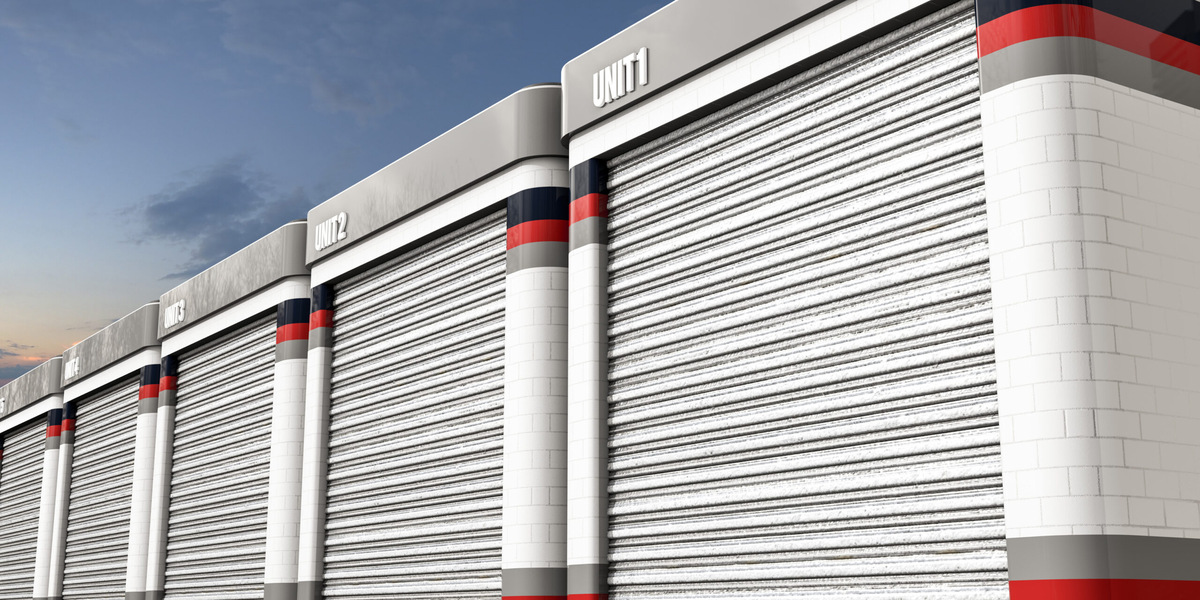

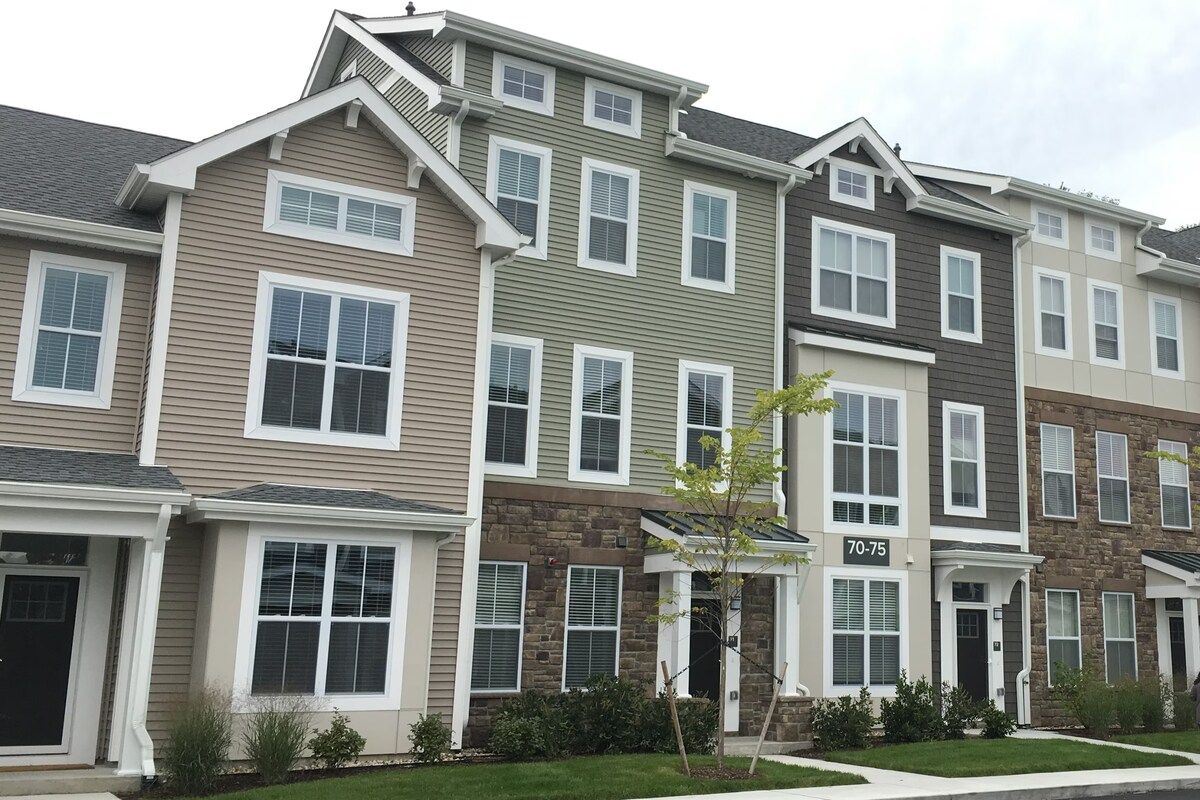
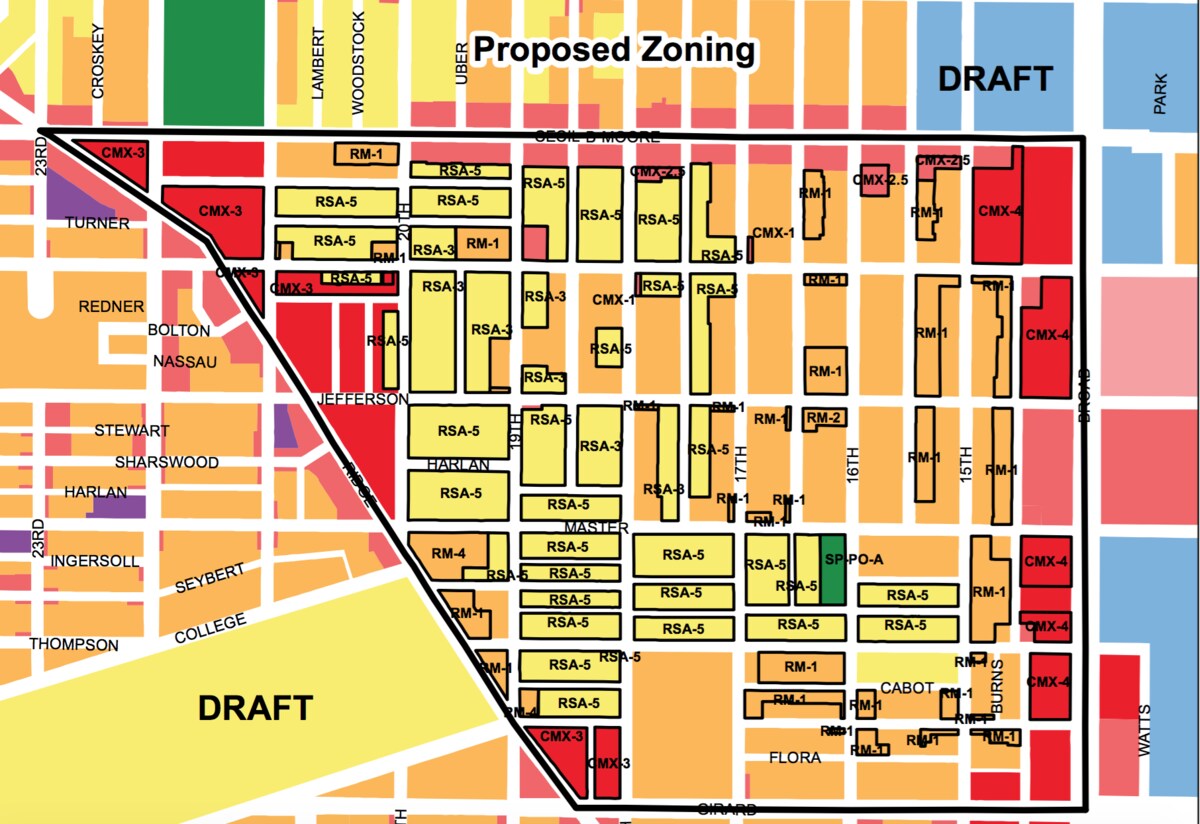
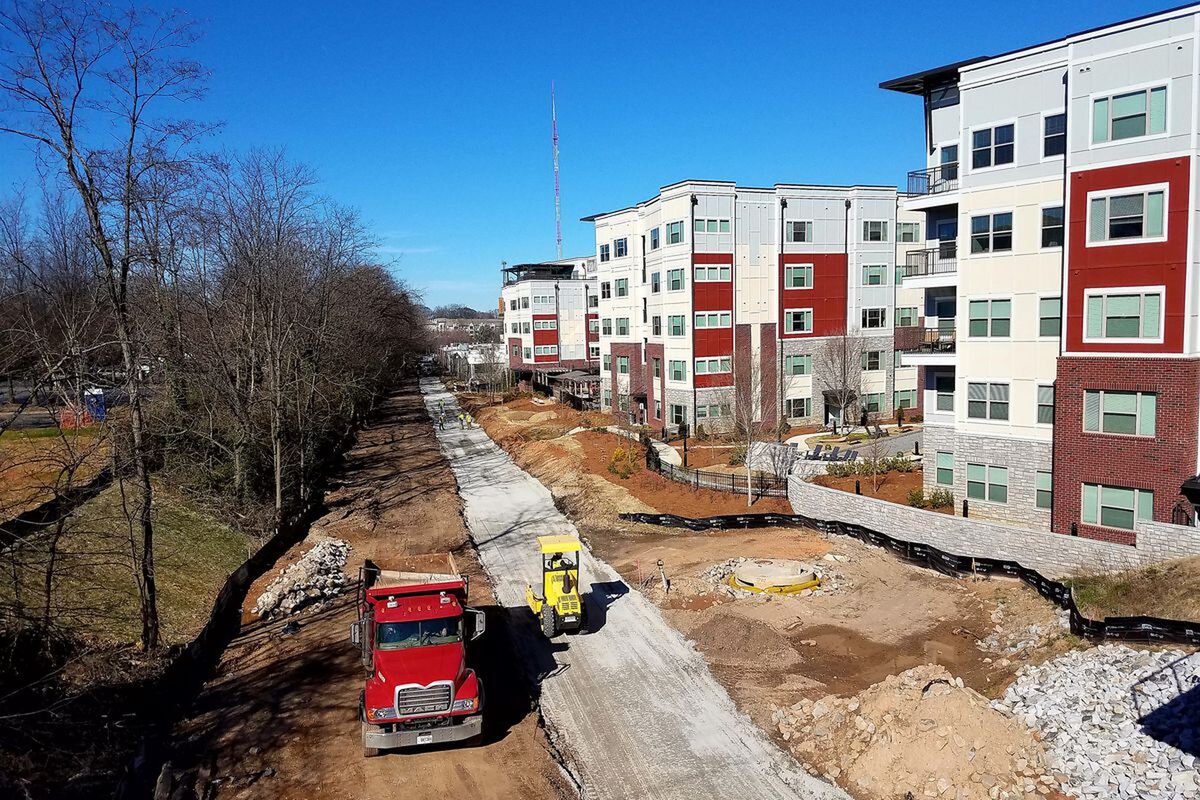
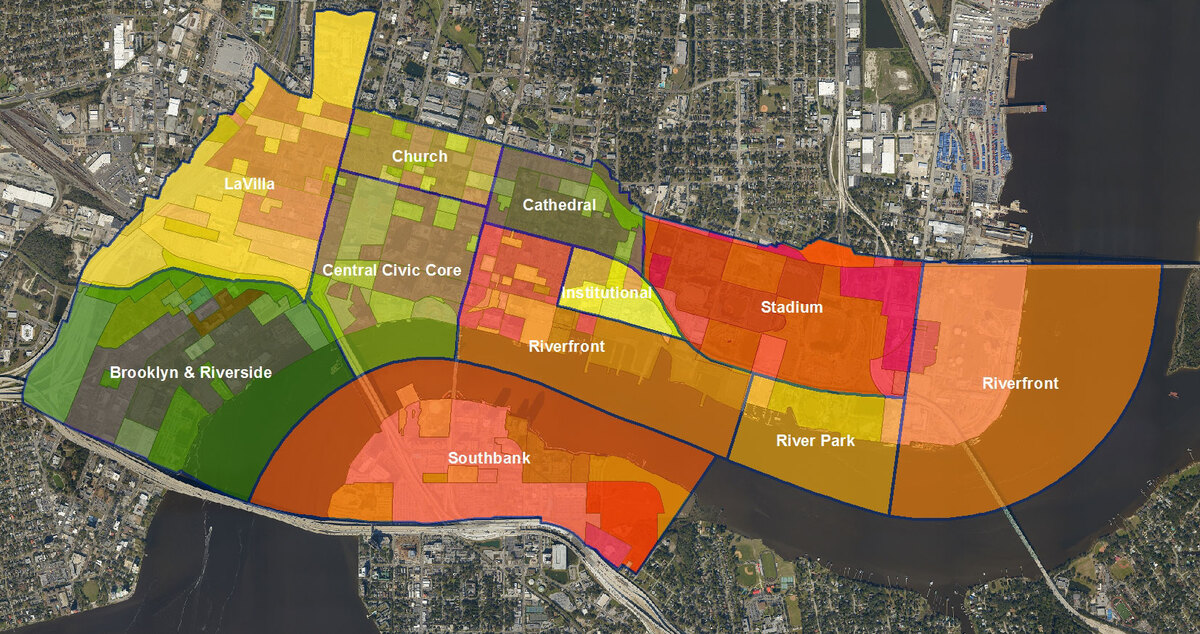


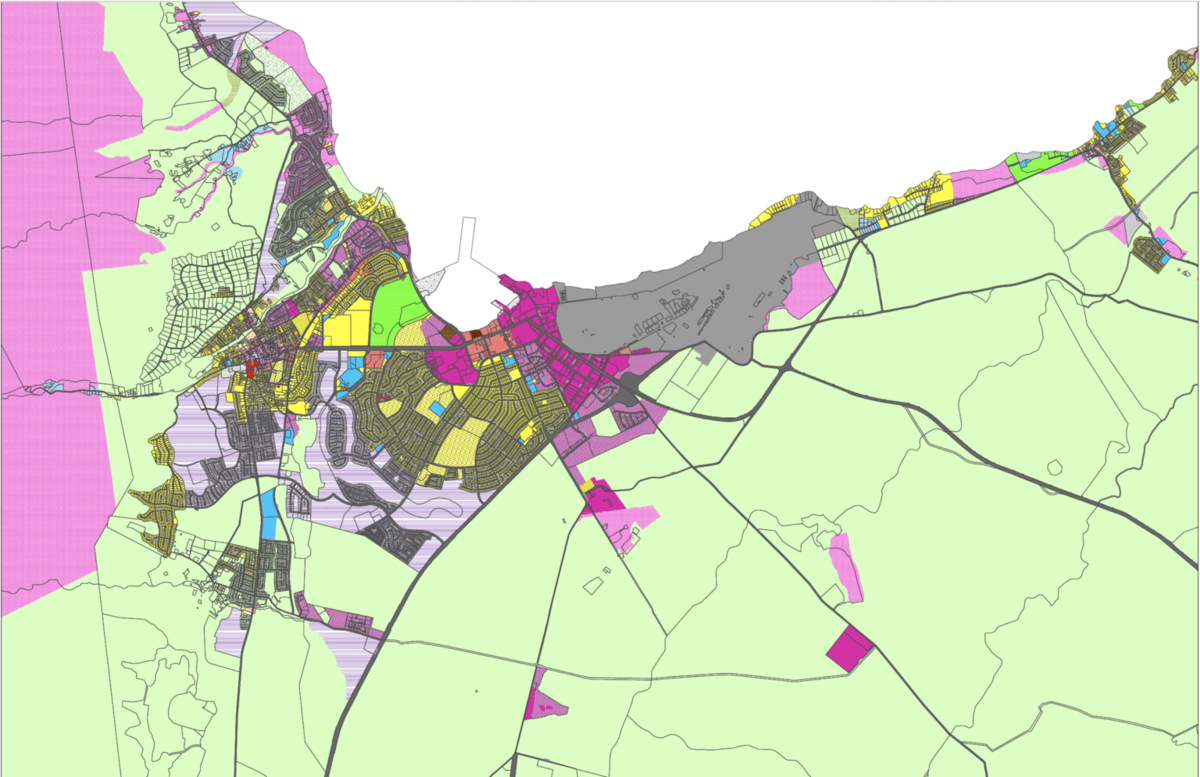
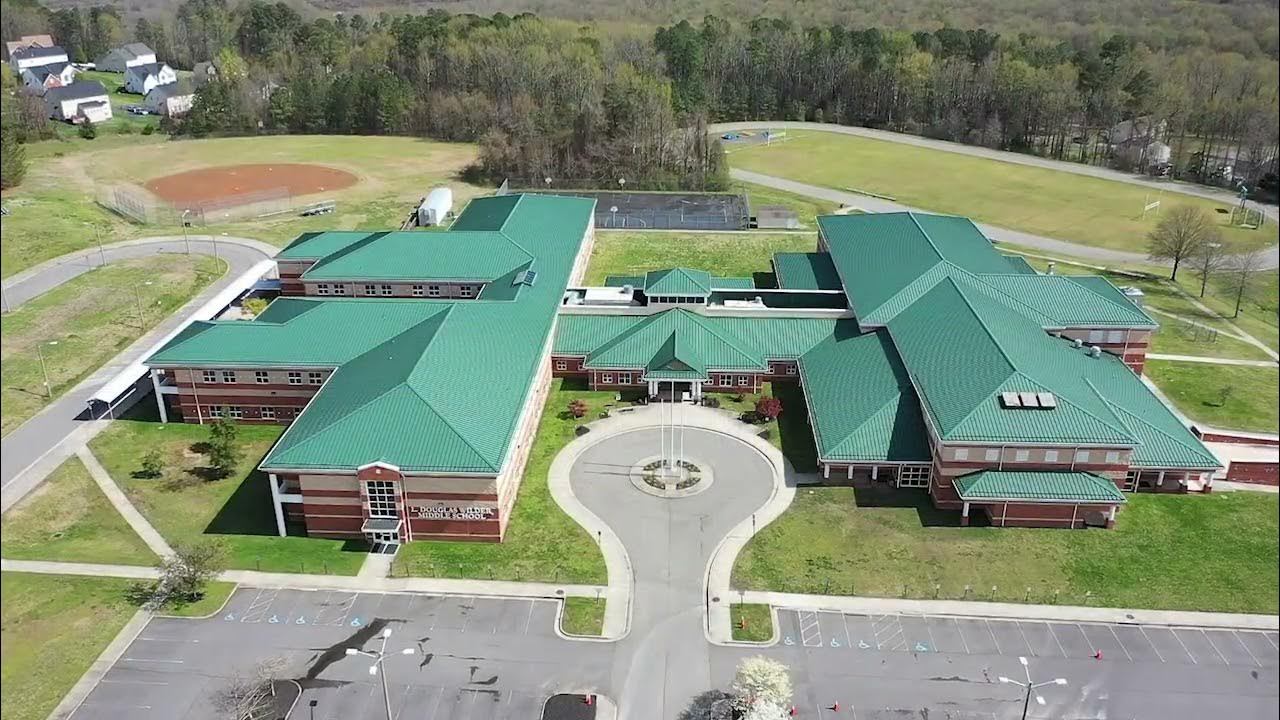


0 thoughts on “What Is A Zoning Law”